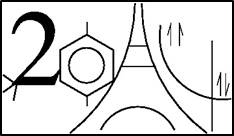In numerous industrial processes, catalytic systems are composed of metallic particles supported on amorpheous materials, with high pressure of reactants in gaseous or liquid environment. Recently, the nucleation, the growth and the morphology of gold nanoparticles deposited on rutile support have been studied by various techniques such as UPS [1], HAADF STEM [2] and GISAXS [3]. They are able to probe the evolution of the particle morphology during the reaction. Despite the accuracy of these methods, there are still questions related to the mechanisms at the origin of the particle growth, the definition of the active site, the role of the oxide support (synergy with the metallic particle, presence of oxygen vacancies).
In this context, the role of modelling is essential to tackle those problems by comparison between atomistic models and measurements. Recently, a large number of theoretical studies have reported on the adsorption of atomic gold and gold clusters at the subnano scale through DFT calculations. Although many efforts have been conceded to advance in the description of those systems, there are still controversies regarding the adsorption sites and bonding strength; due to the presence of oxygen vacancies in the support, and to the DFT+U methodology used to describe the strong electronic correlation. Moreover, modelling the adsorption and reactivity of a metallic particle supported on a reducible oxide at the nanoscale appears challenging. Similarly, almost no information is available for the case of Cu/TiO2.
In our study, we propose DFT+U calculations for the adsorption and the diffusion of gold and copper atoms on a rutile TiO2 (110) surface. The most stable adsorption structures and diffusion barriers have been obtained by exploring the potential energy surface through bidimensional maps. This study opens perspectives for the understanding of the nucleation and the growth of supported gold and copper nanoparticles.
- Autre

 PDF version
PDF version

